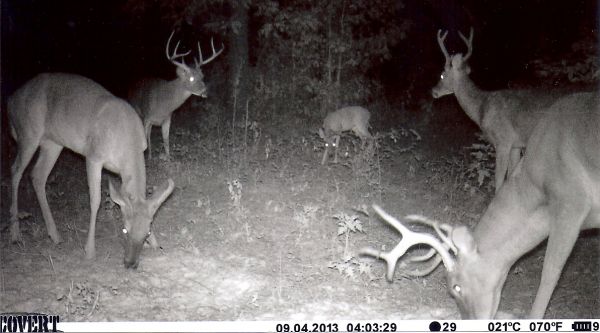
It was obvious that the bucks were feeding very heavily during September on the property in Desoto Parish (Area 2) in preparation of the upcoming rut.
In areas having a later rut, October would be the month where buck activity is high at the feeders. It is a well-known fact that bucks feed heavily prior to the breeding season, building up their energy resources that will be used up during the rut while fighting, chasing and breeding.
Does that had produced fawns will also be hitting the feeders quite hard to rebuild up the energy they used in raising fawns, as well as in preparation for the next breeding season.
Healthy does will be more productive than ones with low body weights.
I noticed this year that deer were eating up the rice bran in late August, September and into October. I was trying to bait up hogs but the deer would jump on the rice bran and 100 pounds would be gone in four days. This might have been in response to the very dry conditions we experienced in August and September.
With October being the pre-rut month for the hunters in the late breeding areas, hunting a feeder prior to the acorn drop might be the key to success during the bow season. Once the acorns begin falling, however, deer would leave these artificial sites and start hitting Mother Nature’s food.
The pre-rut frenzy is an excellent time to set trail cameras up at the feeding sites and survey the deer herd. This camera survey can provide the club or manager with a population estimate prior to deer hunting. The technique for this survey can be found at the QDMA Web site, and there is a book available from the association specifically about using cameras with deer management work.
The survey is also a good way to document bucks that are available for harvest, and this can make for good discussion by hunters as to which buck to shoot or not to shoot.
Once the rut is over, bucks become sociable again as their testosterone levels drop along with their antlers. Managers can conduct a post-season camera survey and obtain another population estimate; however, these surveys are not set in stone, so don’t be surprised if your post-season estimate turns out higher than your pre-season estimate.


